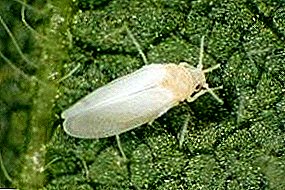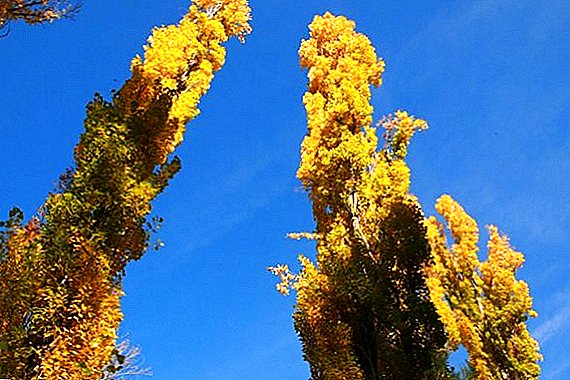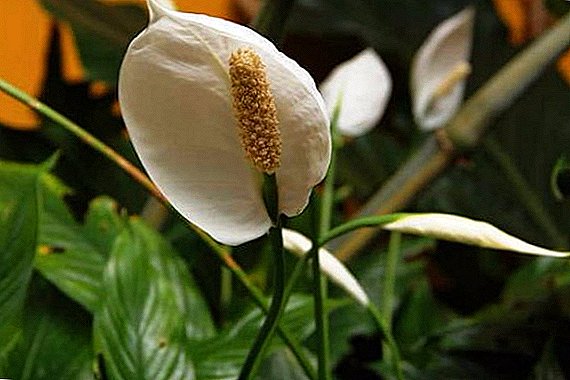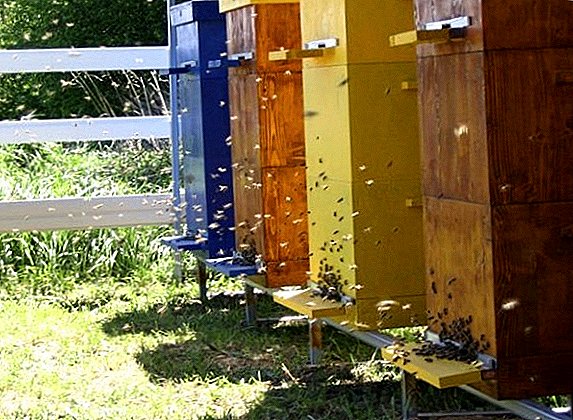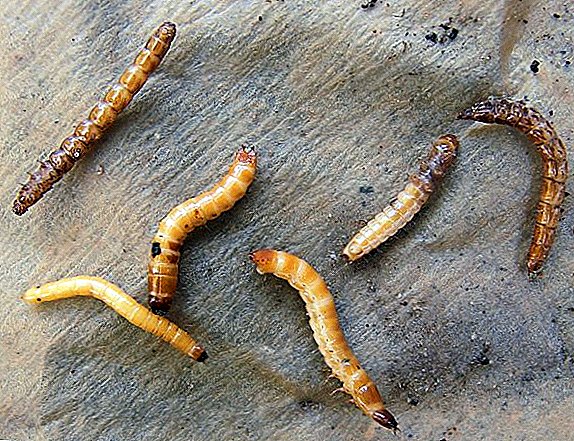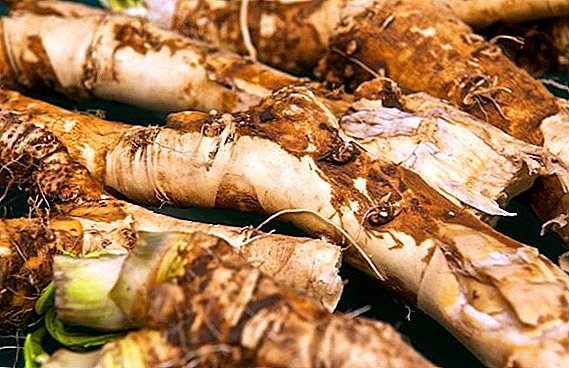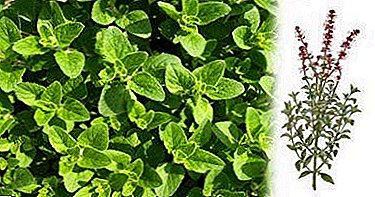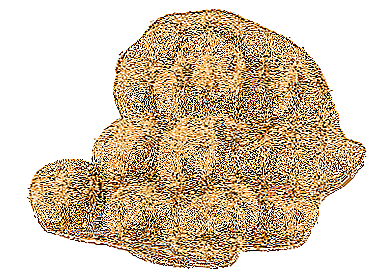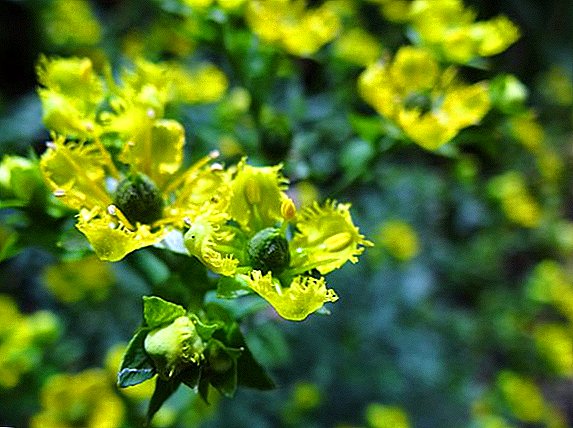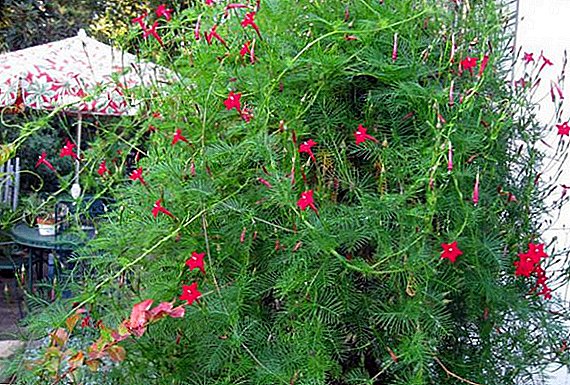 Ipomoea, farbitis or kvamoklit are different names for the same climbing ornamental plant with elegant leaves (pinnately dissected or heart-shaped) and many funnel-shaped flowers. Ipomoea looks attractive, being planted in hanging baskets, on balconies, supports and pergolas, in mono-landings or in compositions with other plants. Let's take a look at the article on how to sow and grow these flowers and care for them in the future.
Ipomoea, farbitis or kvamoklit are different names for the same climbing ornamental plant with elegant leaves (pinnately dissected or heart-shaped) and many funnel-shaped flowers. Ipomoea looks attractive, being planted in hanging baskets, on balconies, supports and pergolas, in mono-landings or in compositions with other plants. Let's take a look at the article on how to sow and grow these flowers and care for them in the future.
Botanical description
- Ipomoea is the common name for species of flowering plants of the family Convolvulaceae, belonging to the following genera: Calystegia, Convolvulus, Ipomoea, Merremia and Rivea. She is a close relative of both the bindweed and the sweet potato.
- Ipomes of different species differ from each other in the characteristics of flowers, leaves and fruits, but all varieties have typical funnel-shaped flowers of white, red, blue, purple and white. A cup of an open flower can have a diameter of 3 to 10 cm. Flowering occurs from May to September, the flowers open early in the morning (at dawn) and close by 11 o'clock.
- Flower liana is a fast growing, climbing plant. In countries where it is grown as an annual, during the warm season the plant reaches a length of 5-8 meters and can braid all the available space with its shoots.
- Kvamoklita leaves have the shape of a heart, and the flowers are formed in the form of a wide open funnel. Ipomoea belongs to the most numerous family of climbing crops with more than 500 species. Some of them are very popular and actively grown by gardeners. The most common genus of Ipomoea is Ipomoea batatas (sweet potato).

Did you know? Bamboo flowers are rare, as in some species of this herbaceous plant, flowering begins only after the age of 65. It is striking that bamboo of one species blooms simultaneously in any part of the world.
Distribution and habitat
Farbitis comes from the tropics: it can be found in South America and Asia. This vine grows equally well in subtropical and temperate regions, in the tropics it is a perennial plant, and in regions with harsh winters, one year old.
Familiarize with common types of Ipomoea, how to properly care for Ipomoea.
The climbing climber throws out long and strong lateral stems, which either hover around other plants, looking for support in them, or are spreading a carpet on the ground. In tropical or just southern regions, farbitis can reproduce twice in a year (seeds ripen, fall to the ground and germinate).
The plant loves to grow and trail on mountain slopes, ledges, fields and hedges. 
Common species
- Blue saucer - sky-blue flowers with a diameter of up to 12 cm, bloom early in the morning (from 6:00) and decorate the green carpet of foliage until 10 am. At this time, the sun is already rising high, and the sensitive ipomoea closes its flowers. If the day is cloudy, the plant will delight gardeners bloom all day.

- Cirrus or Quamoclitus - has an unusual finely dissected green foliage and flowers in the form of small stars. There are various varieties of Ipomoea cirrus (lobed, cirrus, fiery red, Slaughter) with petals ranging from red to white.

- Purple (Ipomea purpurea) - has the longest stem, it reaches more than 8 m in length. Her leaves are green, heart-shaped. Flower petals have a purple or beet color. The diameter of the flower is 4-5 cm.

- Ipomoea Nil (Ipomea Nil) - has a three-meter stem with flowers of pink, red, blue, violet, blue flowers. The shape of the green leaves is heart-shaped.

- Tricolor (Ipomeja trichromatic) - for the summer season it grows up to 4-5 m in height. Flowers can be painted in three colors.

- Ipomoea Moon Blossom (Moonflower) - during the summer it reaches a height of 3 m. The white funnel-shaped flowers grow up to 12 cm in diameter and exude an almond fragrance.

Use in landscape design
The name of this flower is associated with its ability to twist. If you translate the word "Ipomea" from the Greek, it turns out "having a similarity with a worm" - a flowering column grows, wrapping itself around everything it can reach.
As Ipomoea, climbing plants include such as actinidia, climbing rose, wisteria, asarina climbing, princesses, clematis, honeysuckle.
In landscape design Ipomoea is usually used as a vertical gardener and planted:
- at fences and fences;
- around arbors and covered benches;
- near shrunken trees;
- on vertical trellis;
- on the arches that adorn the entrance to the garden or garden paths.

Growing and caring for plants
Care for ipomoea is not difficult. In fact, after disembarking, they require a little attention: they need support to curl, timely watering and loosening, good lighting.
Planting (seeding) and growing kvamoklita do not require special skills. Liana is unpretentious, she grows on any soil, but more readily grows in the sun and open, well-lit areas. This perennial flower grows as an annual in central Russia, since the active growth of the liana stops at a temperature below + 10 ° C.
Important! It must be remembered that some varieties of morning glory are toxic. If a gardener has small children or grandchildren who still know the world in taste and touch, then it is better to refrain from growing this vine for several years.

Conditions of detention
In order for the plant to please the gardener with abundant and powerful flowering, several factors must be taken into account when planting it:
- The plant loves full sunlight, and the ipomoea, located in the shade, most likely will not bloom. Ipomoea seedlings (even self-seeding) perfectly transplant transplant to a more suitable place.
- In addition to light, the location of the vine should be protected from the cold north winds. Therefore, it is better to choose the south side of the site. The flower feels great when planted against the southern wall of the house.
- Sowing seeds or planting seedlings, immediately establish a decorative support for a climbing flower. It is possible for the weaving of the Ipomoea to stretch the twine or to throw the lash on the trees growing nearby.
- Perhaps the cultivation of morning glory as a container soil culture. Liana grows quickly and strongly develops the root system, it must be taken into account when planting in containers so that the plants have enough space for growth: one seedling has enough a pot with a diameter of 20 cm for the normal development of the root system. When creating compositions with other plants, you need to choose fast-growing species, so that the ipomoea does not “drown out” the neighbor.

Soil and fertilizer
Many plants thrive in fertilized soil, but the ipomoea prefers a well-drained, organic-poor (or medium) soil. Although a layer of mulch at the roots of a flower is beneficial, it is not necessary to fertilize it with manure.
Too rich soil is often the reason why the ipomoea does not bloom, and the whole season builds up lush, beautiful foliage to the detriment of flowers.
Ipomoea prefers sunny places, but will tolerate a scattered shadow. Flowers also take root well on poor and dry soils. In fact, the plant can easily germinate on any soil, including garden paths, fences and curbs, where wild grapes usually grow.
Even with a neutral attitude of the plant to poor soil, it does not like dry soil and will not grow on it. The soil should be moist but not soggy. 
Why ipomoea does not bloom - reasons:
- Top dressing - phosphate fertilizers contribute to the formation of flower buds, but the use of nitrogen will only lead to the growth of leaves, shoots and stems.
- Watering - lack of flowering can be due to lack of water.
- A variety is a late-flowering variety, therefore, until the biological time of flowering of this plant comes, there will be no flowers.
Watering and moisture
- Ipomeyu need to be watered once or twice a week, the soil should be slightly damp, but not wet.
- Container plants dry out faster and may require more frequent watering, especially in the southern regions.
- Watering should be abundant, frequent surface irrigation of the soil is unacceptable, since at the same time the plant grows weak, finely planted roots.

Relation to temperature
- Ipomoea can grow only at positive temperatures, with an average daily temperature of + 10 ° C, the stem and leaf mass begins to grow rapidly, and flower buds are laid.
- During the warm period, the plant continues to grow, which ends with the first frost. When the air temperature is below 0 ° C, the aboveground part of the liana dies, and at steady, prolonged subzero temperatures (-3 ° C), the roots die.
Reproduction and planting
Ipomeyu can be grown in two ways:
- sowing seeds in the garden;

- through growing seedlings.

Ipomoea seeds are sown directly in the ground after the threat of frost has passed and the soil has warmed up (mid-May).
With the help of garden tools in the soil make a groove with a depth of 1-2 cm. The length of the planting groove depends on the number of available seeds. The groove is moistened with a garden watering can, and then allowed to soak into the soil.
Ipomoea seeds are laid out at the bottom of the groove, the distance between them should be no less than 10-15 cm. Sown seeds are sprinkled with soil. The thickness of the soil on top of the seeds should not exceed 1-2 cm.
It is advisable to cover the sowing site with a suitable piece of plastic film along its length - this will help to retain moisture in the soil and will serve as an additional warming of the soil. As soon as the first shoots of seedlings appear (in 7-10 days), polyethylene is immediately removed. 
Young seedlings are watered as needed, about once every 2 or 3 days.
Planting through seedlings:
- Growing seedlings of kvamoklita from seeds should be started 4-6 weeks before the proposed planting of young vines to a permanent place.
- Since this plant has a hard seed coat, it is advisable to soak it before starting sowing (hold the seeds overnight in a damp cloth).
- For growing choose a container with a depth of at least 7-10 cm.
- Two hours before sowing, the soil is slightly spilled with warm water (not to the dirt).
- Immediately before sowing, a recess is made in the soil for the seeds. This can be done by marking a landing furrow with a depth of 1-2 cm.
- Lay out the seeds in the planting furrow at a distance of 2-3 cm from each other.
- Sown seeds are carefully covered with soil and lightly tamped with a palm over the ground. Since the land in the container was already wetted before starting work, it is not necessary to water the crops a second time.
- The seedbed container is covered with clear glass on top or wrapped with polyethylene. This cover is removed only in order to air and water the drying soil.
- A week later, the first seedlings will hatch, after which the transparent covering of the container must be removed.
- Vertical supports are installed near the newly emerged shoots. If this is not done, then in the process of growing young morning glories will intertwine with their neighbors and when they disembark on the street, they will be difficult to unravel and separate from each other. As supporting structures for young vines, you can use wooden sticks for sushi. Near each stalk is stuck into the ground one supporting stick.
- Further care of the seedlings will be to moisturize and loosen the soil between the rows.
- Saplings can be planted on the street when the threat of the return of the night frost is finally warming and passing away.

Important! In order to prevent self-seeding and to control the undesirable spread of the Ipomoea around the dacha, periodically remove the dried flowers, as well as all the vines that had died after the first death frost in the fall.
How to collect Ipomoea seeds:
- It is necessary to inspect the vines and find the dried flowers.
- Behind each dried flower there is a small round pod in which seeds ripen.
- We need to find such pods that have become tough and turned brown. It is very easy to determine the ripeness of the seeds in the pod - when pressed, the pod produces a crack and opens the sash.
- Seeds are removed from the pods and laid out to dry in the shade on a white sheet of paper or saucer.
- Dried seeds should be stored in a paper bag. They remain viable for 5-6 years.

Possible difficulties in growing
This grassy vine is very unpretentious, but still and sometimes with this plant there can be some problems:
- Yellow leaves - may be caused by drying of the root layer (the plant requires watering) or excessive watering (the soil has turned into a swamp). Watering should be moderate: if the soil is slightly wet, you do not need to water. Also, discoloration of the leaves may report plant disease or pest attack. In this case, it is necessary to determine the cause and treat ipomoea with a special drug (insecticide or antifungal agent).
To insecticides include such drugs as "Enzio", "Marshal", "Fastak", "Kemifos", "Calypso", "Kinmiks", "Vertimek".
- Lack of colors - This problem is usually caused by a lack of sunlight. It is possible to correct - thin out using a pruner the source of shading (tree branches, etc.) or, if the plants are not higher than 2 meters, transplant to another, well-lit place.
Did you know? The widest and heaviest flower in the world is Rafflesia Arnoldi. There is only one bright red flower on a plant. Its leaves are thick and fleshy, and the diameter of the blooming flower reaches 90 cm. The weight of Arnoldi rafflesia is 11 kilograms. An unusual flower smells disgusting: it gives off an intolerable smell of decaying flesh.

Pests, diseases and prevention
The plant is prone to fungal diseases. The source of the disease can be excessive watering or spores of pathogenic fungi, such as phytophthora overwintering in the soil.
In this case, the affected parts of the liana can be cut and removed from the site, and the rest of the plant, in particular, the cut point, must be treated with antifungal preparations.
Ipomoea can also be affected by viral diseases - stem and root rot: these diseases are not treated. Diseased flowers are removed along with the root system extracted from the ground and removed from the site to prevent contamination of neighboring plants.
White edema is not a disease and happens when summer is too rainy and cold. It can appear in the form of convex round cones on the leaves, which after a while change their color from green to brown. Affected leaves soon showered. 
White edema may also appear on kvamoklite, which grows in an unheated greenhouse.
Preventive measures:
- As a preventive measure of fungal diseases of a plant, it is recommended to process twice during the growing season with copper-containing preparations (Ridomil Gold, Acrobat MC, Profit Gold) or biological preparations (Fitoftorin, Baktofit, Fitosporin M).
- It is also possible to prevent the development of fungi by treating ipomey every 10 days with a solution of whey (1 liter of pure cold water is added to 1 liter of whey). Freshly prepared solution sprayed the plant on the sheet.
- Do not thicken the plants when planting, provide good lighting and in no case fill in! Too frequent and abundant watering in 50% of cases are the cause of the disease.

Ipomoea can be attacked by insect pests such as aphids, spiders, and spider mites:
- Aphids can be seen on the back of the leaf plate with the naked eye.
- Leaf wrap leaves, wrapping their larvae in them, and gnaws holes in them. All this leads to the fading of the sheet mass.
- The presence of spider mites on a plant can be determined by a light spider web on the leaves and in the corners of the stepson's attachment. This pest imperceptible to the eye sucks the juice from the leaves, which causes the plant to dry out.
These pests need to be fought in a timely manner: one or two treatments with a suitable preparation (“Confidor Plus”, “Aktara”) - and the plant will be completely free from uninvited invaders.
With very little effort, the gardener will be able to decorate his flower garden or garden with a lush green heap of leaves with bright and delicate flowers blooming daily. The flower arch at the entrance to the dacha with the ipomoea winding along it will attract the attention of passers-by and neighbors, as well as provide the hosts with a great mood for the whole day.


